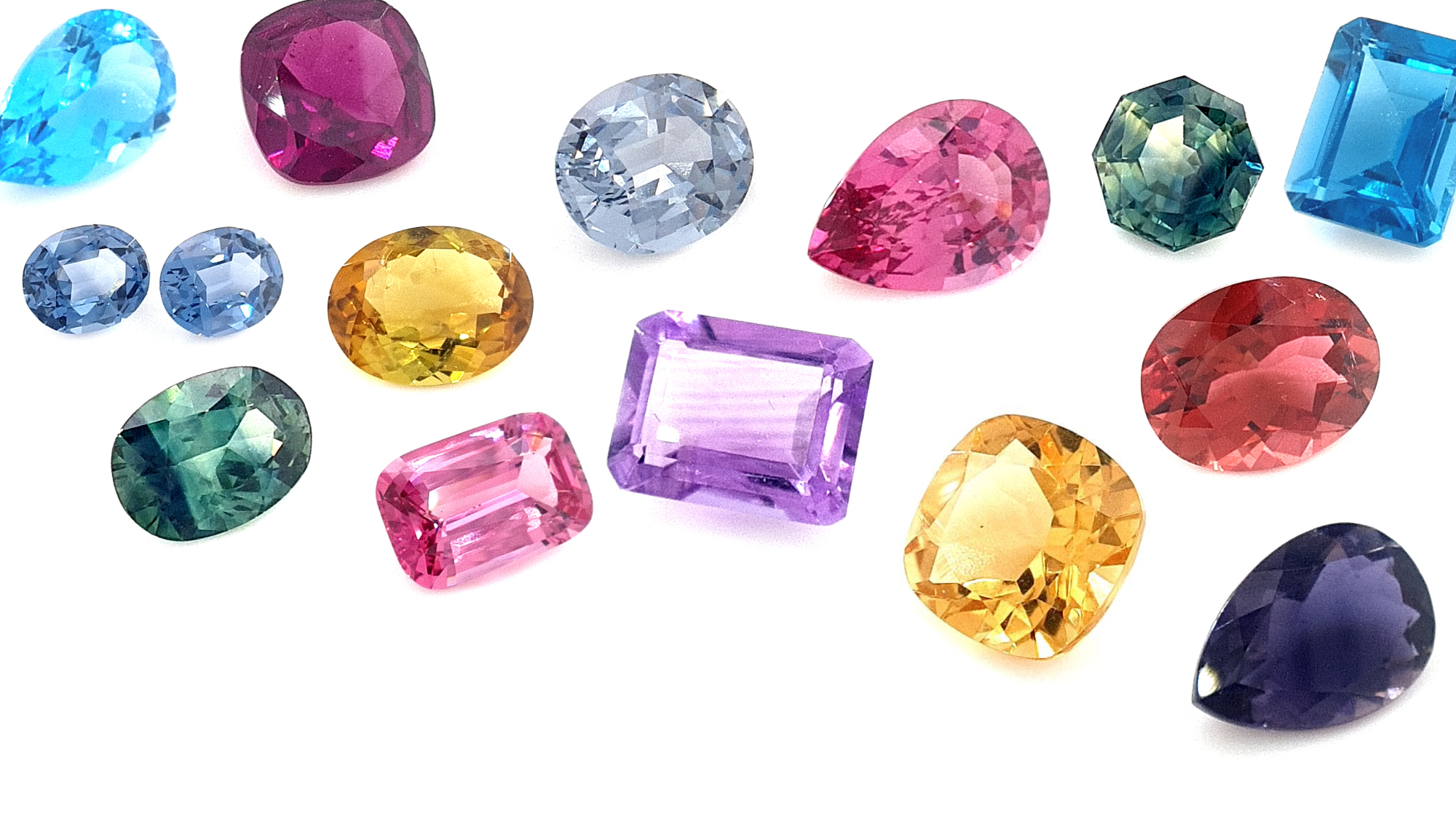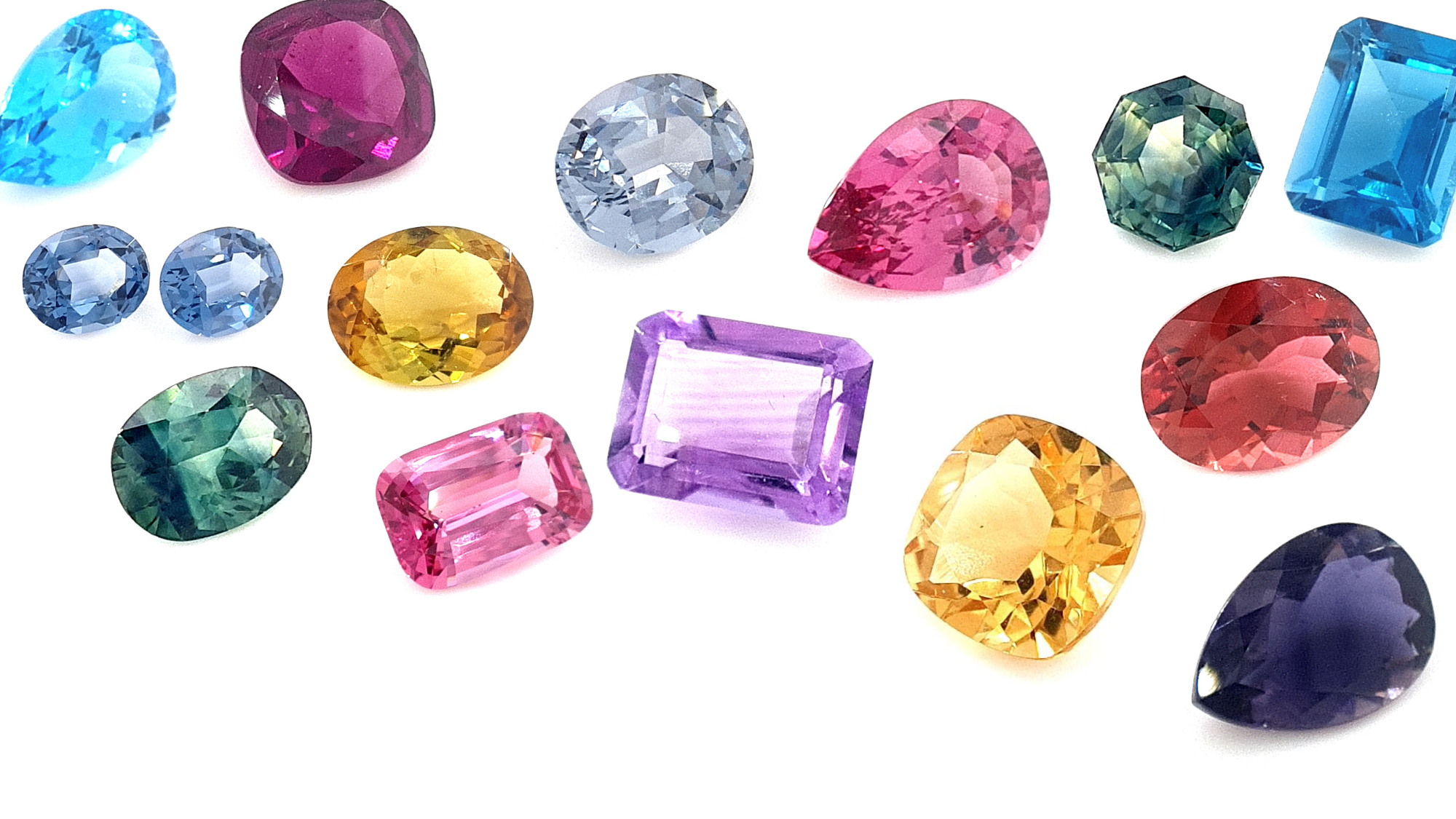Highly valued for their beauty and symbolism, gemstones are a great way to express your individuality and commemorate special occasions. For millenia people have been using gemstones to show status and wealth, for religious ritual and as adornment and expression of self.
Below we have listed our favourite gemstones along with some information on each. For more detailed information on some gems, check out our blog.
Garnet
Garnet comes from the Latin word granatus, meaning grain. Garnet is mostly mined in Southeast Asia, Brazil, and Africa. Occurring in every color except blue, the garnet is a versatile stone, appropriate for a multitude of applications and occasions.
Amethyst
Amethyst is a member of the quartz family and ranges from light to deep purple. Amethyst is derived from the Greek word emthystos meaning not drunk. The ancient Greeks and Romans made drinking cups out of Amethyst believing that it would prevent intoxication.
Aquamarine
Aquamarine, from Latin "aqua marina" or "water of the sea", was named because of its blue or turquoise colour. The worlds main mining deposits of Aquamarine are located in Brazil and Pakistan, however, this beautiful mineral can be found in many places across the globe.
Diamond
The word Diamond comes from the Greek word adamas meaning "unbreakable" or "unalterable". Diamonds are composed of a single element, Carbon. Diamonds are considered the ultimate symbol of love and is said to enhance relationships.
Emerald
Emeralds can range in colour from light to dark green. Today it is still widely believed that wearing emeralds grants good health, wisdom, prosperity, creative skills and blissful relationships. Emeralds from Columbia are generally considered the most valuable.
Pearl
Pearls are the only gemstone that have an organic origin. They are made by special bi-valve molluscs, like oysters, and can be of Fresh Water or oceanic origin. Pearls come in many colours and shapes but the ideal pearl is while, smooth and perfectly round.
Ruby
The word Ruby is from the Latin word "Ruber", meaning red. Ruby is extremely hard and second only the diamond in hardness. The ruby is one of four universally recognised precious stones, along with the sapphire, emerald and diamond.
Peridot
Peridot is unique in that it naturally occurs only in one colour, Olive Green, and naturally originates from the upper mantle (the only other gemstone formed at this depth is the diamond). Peridot vary in shade, but the most valuable are the dark green tones.
Sapphire
Sapphires get their name from the Greek word "Sappheiros" meaning "blue stone". Althought the blue is the most well known colour, Sapphires form naturally in all the different shades of Corundum, except red - which are referred to as rubies.
Opal
Approximately 97% of the world's opal comes from Australia but these gems occur naturally across the globe. Opals fluctuate in colour and are often multicoloured. The most valuable colour opal is black.
Citrine
Citrine is a transparent yellow variety of quartz. This colour is attributed to traces of iron in the crystal structure. Natural Citrine is very rare and most citrine on the market is the result of heat treating Amethyst.
Topaz
Topaz actually has an extremely wide colour range and is pleochroic, meaning the gem can show different colours in different crystal directions. Topaz in the shade "London Blue" is the most valuable.


















